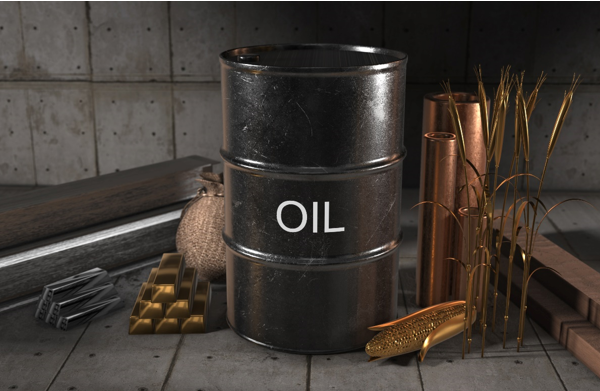
The commodities market is one of the oldest forms of trading and is a popular choice amongst investors due to its volatile nature, and the ability to hold a long or short position to gain profit.
In this article, we’ll explain what the most popularly traded commodities are, the factors that can affect them, and why their volume of trade can be beneficial to investors.
What is a commodity?
Commodities are a type of product that can be found naturally in the ground or grown agriculturally. They’re a key component of the financial market, as the manufacturing of commodities is crucial to national economies and the value of various companies.
They can be categorized into two main types: Hard and Soft. Hard commodities are those that are extracted using mining, or other similar processes. Whereas, soft commodities refer to products that are grown or livestock.
These can then be broken down into further sub-categories which include agricultural, livestock, energy and metal commodities. Each type of commodity has its own value and can be affected by various factors. For example, corn and coffee can be impacted by weather patterns or natural disasters, and oil and natural gas can be affected by government policies and economics. However, all commodities are heavily reliant on the process of supply and demand.
Trading in commodities can take place in well-known exchanges, such as the largest futures and options exchange in the world, The Chicago Mercantile Exchange (CME), but can also be traded in financial derivatives, such as with the online trading platform Plus500.
A futures contract is the most common way to trade for those requiring the physical commodities and involves the buying and selling of the asset at a fixed price at a future delivery date.
For speculative investors, contracts for difference (CFDs) are another option. This does not involve the actual ownership of the commodity but is based on the price movement from opening and closing the contract, mirroring that of the underlying futures contracts from the world’s major exchanges.
Popular commodities
According to data and figures from the Futures Industry Association (FIA), these are the top, most actively traded commodities:
- WTI Crude Oil
- Brent Crude Oil
- Natural Gas
- Soybeans
- Corn
- Gold
- Copper
- Silver
WTI stands for West Texas Intermediate and is the most commonly traded oil on the market. As such, it is used as a grade of crude oil to benchmark oil pricing as well as the global economy. It’s also known as ‘Texas light sweet’ due to the nature of the crude oil, and is in high demand, used to create gasoline and diesel. It is a popular commodity of the New York Mercantile Exchange for futures contracts.
Soybeans are the most popular of the soft and agricultural commodities when it comes to investment, as a vast number of the product is exported from the US to China, the EU, Japan, Mexico, and Taiwan. It also accounts for the majority of oilseed production in America.
For the metals sub-category, gold is the most popular amongst investors. Throughout history, it has been seen as a safe option, as usually withstands its value during political turmoil or uncertain circumstances. To this day, it is in high demand for its aesthetic properties, but also now is used in the manufacturing of electronics.
Liquidity
The benefit of trading in popular commodities is the liquidity that comes with it. As a highly traded asset, it is likely that more transactions are taking place, and therefore become easier to buy and sell. In theory, this poses less risk, as there is a continuous and significant supply and demand for the commodity in question.
Usually, when there is a high level of trading activity and a liquid market, there is less chance of slippage for the trader. Slippage refers to the difference between the price quoted and the actual price of the trace. This can work for and against you, as can lead to substantial losses if there is low liquidity and higher slippage.
When trading commodities, therefore, it is recommended to turn to the assets that have a high volume of trade. As previously mentioned, the highly liquid commodities include oil, natural gas, gold, silver, cotton, soybeans and wheat.
Like any trade in the financial market, there is always an element of risk or impact from unprecedented factors, so always do your market research and study the individual commodity, before you make any trading decisions.
Become a Harlem Insider!
By submitting this form, you are consenting to receive marketing emails from: Harlem World Magazine, 2521 1/2 west 42nd street, Los Angeles, CA, 90008, https://www.harlemworldmagazine.com. You can revoke your consent to receive emails at any time by using the SafeUnsubscribe® link, found at the bottom of every email. Emails are serviced by Constant Contact








